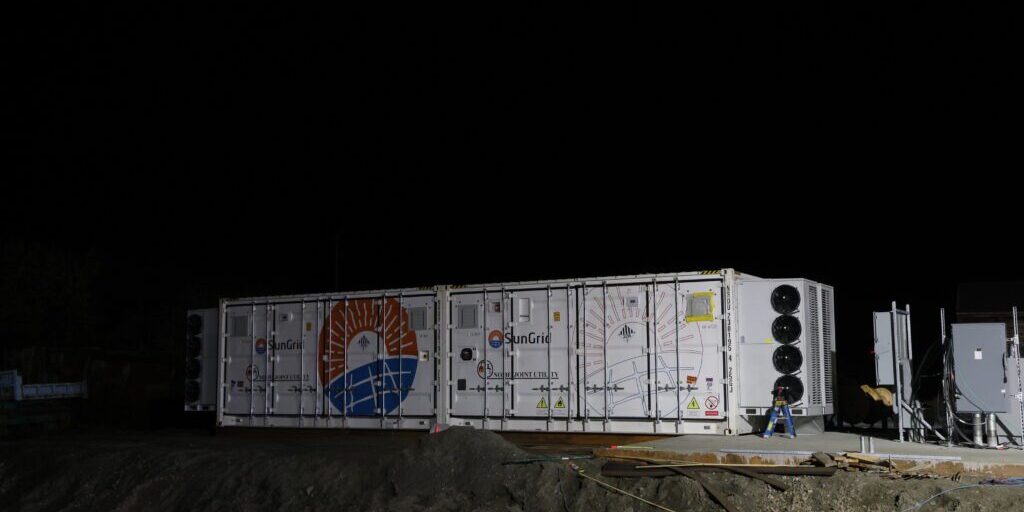Right on cue, the lights in Nome go dark. It’s 4:00 a.m. and Nome Joint Utility System (NJUS) technicians are rushing to integrate the latest addition to the grid, a new battery energy storage system or BESS.
From the outside, the BESS doesn’t stick out among the storage containers littered around Nome’s small boat harbor. The new system resides in two connexes, each weighing about 50,000 pounds. Inside, rack-mounted battery modules hum from the sound of spinning cooling fans.

NJUS' Field Operations Superintendent, Thomas Simonsson, explained how the new system will work.
“So the windmill will generate power to the battery bank, and if there is a day when there's no wind, we will be able to use the battery to offset the generators,” Simonsson said.
From his desk, Simonsson opened up a program on his computer to see Nome’s current demand.
“So right now, our demand or system load is let's see… 4000 kW," Simonsson explained.
The generators run most efficiently when they’re meeting about 70% of that demand. If the wind is blowing, the utility’s two 900-kW wind turbines can meet and even exceed the rest of the demand.
“One of my windmills could produce, if it would have been windy, which it is today, I could probably offset those 700 KW," Simonsson said.
And now, thanks to the new 2.75 kWh battery system, excess energy can be stored and used on the days when it's not-so-windy.
Being able to dynamically blend diesel, wind, and battery energy sources is more than a party trick. General Manager John Handeland says it’ll help make energy costs more consistent for residents over the coming years.
“Our big variable is diesel cost. You just don't know from year to year what that might be," Handeland said.
In the future, Handeland hopes the utility can add at least two more windmills to the Banner Creek Wind Farm just north of Nome. Alongside it would likely come an investment in additional batteries to increase the grid’s capacity.
This system near Nome’s small boat harbor received $2 million in grant funding from the Alaska Energy Authority’s Renewable Energy Fund, as well as $300,000 from the Denali Commission. Handeland says they would seek similar grant funding for future expansion efforts.





